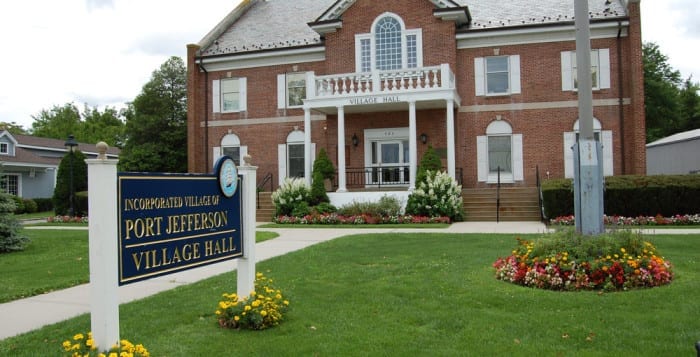They say in life communication is key.
Those in the vicinity of Port Jefferson Village Hall and the Port Jefferson Country Club should soon expect to see improved cellphone signal reception thanks to an action taken by the village board Feb. 5. The board unanimously passed a resolution approving the design of the two Verizon antennae.
According to village Mayor Margot Garant, the antennae will not resemble the controversial cellphone towers being debated in places like the Village of Old Field. The mayor described Port Jeff’s new signal boosters in an email as “completely non-invasive and hidden.” She said they are small boards that will be placed behind wood in the cupolas, or small domes typically adorning the roof of a building. She said the devices will strengthen cellular reception in the vicinity of the two locations and would net the village about $13,000 annually in revenue per unit.
She added that the installation was desired in part as a way to alleviate an ongoing issue of inefficient cell service at and around the country club and village beaches, each located in the northeastern corner of Port Jefferson.
“We need cell service at the country club and beaches desperately for emergency related services,” she said.
Board Trustee Stanley Loucks, who also serves as the board’s liaison to the recreation department, expressed similar concerns about signal strength at the club.
“There are many areas on the country club property where there is absolutely no service,” Loucks said. “You can actually move a few feet and lose service. This has been a problem for many years and presents a dangerous situation. Golfers, tennis players, maintenance workers and club guests can and have experienced situations where assistance was needed, and they could not make contact with anyone. This becomes more of a problem when you are on or near our beaches.”
Residents’ concerns about the safety of stronger cellphone signals in close proximity to communities have abounded during the Village of Old Field’s public discourse about a proposed tower at a public park, known by many as Kaltenborn Commons, located at the intersection of Old Field Road and Quaker Path.
Oleg Gang, who works at Brookhaven National Laboratory, said during a hearing on the proposed Old Field cellphone tower he lives in close proximity to the proposed location and was among those who voiced opposition due to health risks.
According to the website of the American Cancer Society, there is currently very little evidence to support the idea of cellphone towers increasing the risk of cancers or other health problems.
Others in Old Field have also balked at the proposal because of the look of the tower. The proposed tower is similar to one installed in Belle Terre Village in recent years, according to Tanya Negron, founder of Elite Towers, a Long Island-based company that develops wireless telecommunications tower sites and is working on the Old Field project.
In August 2016, U.S. Sen. Chuck Schumer (D-New York) revealed a list of areas on Long Island deemed to be “dead zones” for cellphone service. The list was compiled through a crowdsourcing campaign and included Crystal Brook Hollow Road in Port Jefferson Station, North Country Road in Port Jefferson and Norton Avenue in Terryville.
“A heavily populated region like Long Island shouldn’t be home to over 200 dead zones,” Schumer said at the time, adding shoddy cell service could be a deterrent for individuals or businesses looking to move to the area.



































